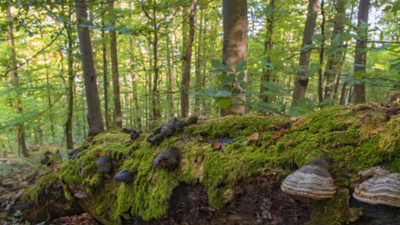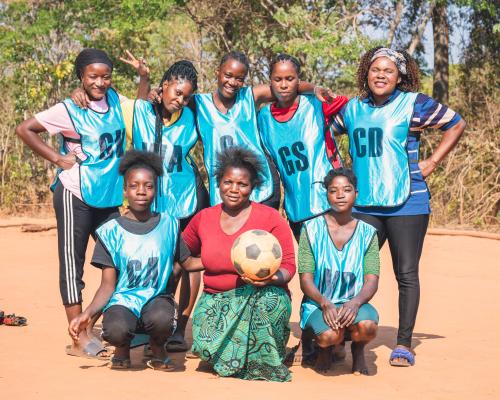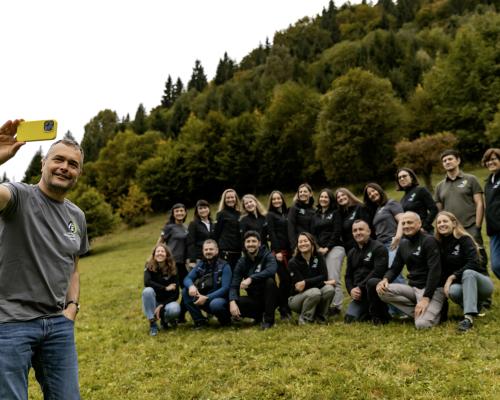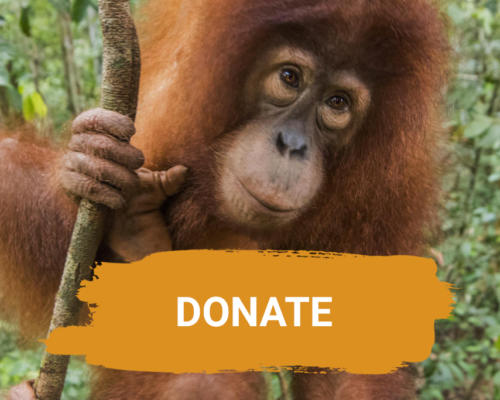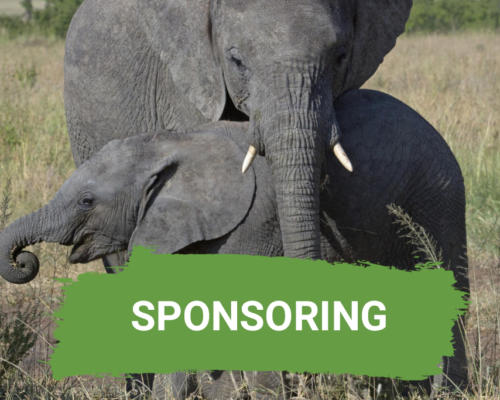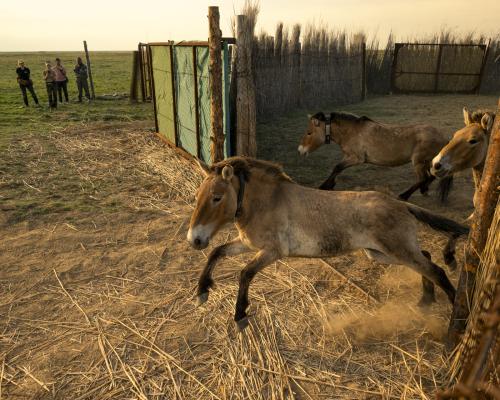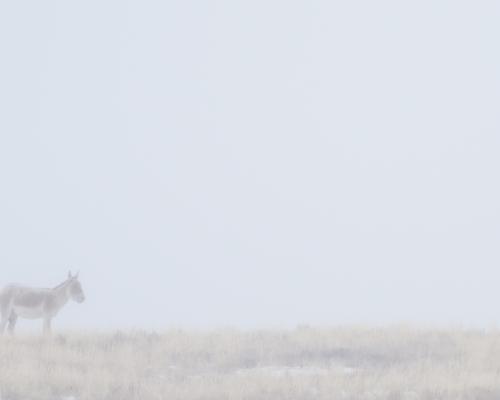An international team of 92 scientists and conservationists has joined forces to create the first-ever global atlas of ungulate migrations. Detailed maps of the herds’ seasonal movements will help governments, indigenous people and local communities, and wildlife managers to identify current and emerging threats to migrations and guide their protection.
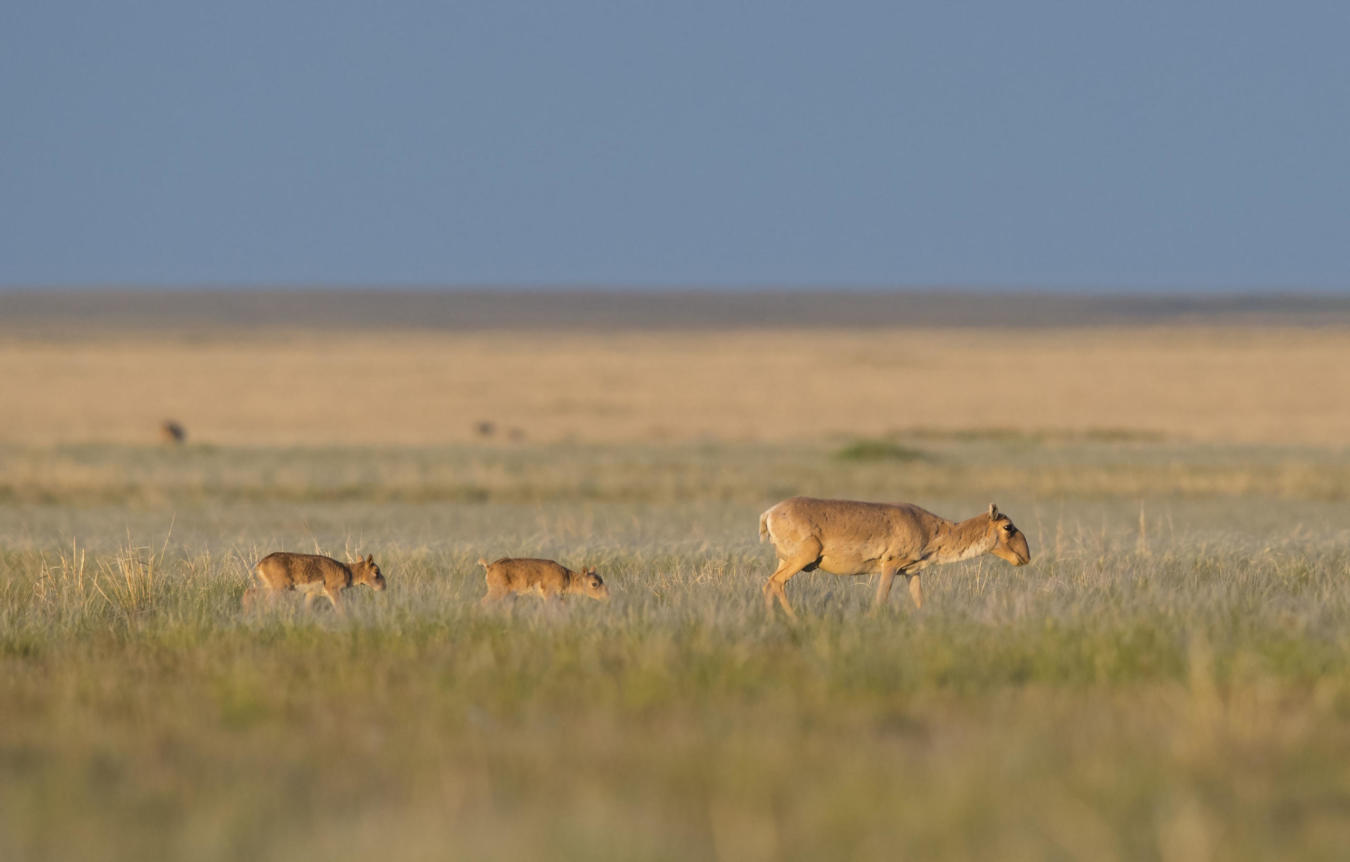
Launch of First Global Initiative to Map Ungulate Migrations Comes at Crucial Time for Kazakhstan’s Saiga Antelope
Frankfurt, 7 May 2021 – To effectively protect ungulate (hooved mammal) migrations we need a clearer picture of these seasonal movements. To this end, an international team of 92 scientists and conservationists will work together to create the first-ever global atlas of ungulate migrations.
The Global Initiative for Ungulate Migration (GIUM), developed in partnership with the Convention on the Conservation of Migratory Species of Wild Animals (CMS) – a UN treaty, was launched in the May 7 issue of the journal Science in the commentary “Mapping out a future for ungulate migrations”.
As two of the co-founders of the Altyn Dala Conservation Initiative (ADCI) – working for the conservation of the steppe ecosystem in Kazakhstan – the Frankfurt Zoological Society (FZS) and partners at the Association for the Conservation of Biodiversity of Kazakhstan (ACBK) are members of the scientific group creating the atlas.
As the extent of human impact expands across the globe, detailed maps of the remaining seasonal movements of ungulate herds will help governments, indigenous people and local communities, and wildlife managers to identify current and emerging threats, and guide conservation efforts to maintain migrations.
A proposed route for a new 2,000 km-long highway – the Road Centre West project – stretching from Kazakhstan’s capital to the west of the country threatens to permanently dissect the territory of the Betpakdala saiga antelope population. The country’s second-largest saiga antelope population, now officially numbers 111,500 and shows signs of a full recovery after a devastating mass die-off in 2015. Satellite tracking data from the last ten years indicates that two of the population’s migration bottlenecks would be impacted by the road. A thorough assessment of route options would be more likely to lead to an outcome that is better for people and nature.
Conservation groups emphasize that this is not a question of halting development in the interest of wildlife. They suggest that an alternative win-win solution exists and call on the ministry responsible to urgently rethink the project. Research undertaken by the coalition of conservation groups found that there are viable alternative routes based on existing roads that would connect larger settlements to smaller ones so that more people would be reached by the road, and would completely avoid the rangelands of Betpakdala’s saiga antelope.
Human disturbances like roads and fences have pushed many ungulate migrations into sharp decline. “The idea of establishing the atlas is timely. It is vital to include the saiga as one of the long-distance migratory ungulates in Central Asia because their migration faces potential disruption by an expanding national road-building program,” says FZS research fellow Steffen Zuther.
Saiga antelope migrate across huge areas in order to survive the changing seasons of the harsh steppe environment. A species used to open, wide landscapes, the saiga will very likely not use any artificial structures designed to help them cross the new road. They might not even approach the road corridor due to stress caused by the road traffic. Over three years since its construction, saigas wearing our transmitters have still not crossed the Shalkar Beineu railway (based on tracking data from 2017 – 2020). Furthermore, saiga have also been found to avoid crossing existing paved roads, yet freely cross dirt roads.
Should the road move forward on its current routing the impact on saiga antelope could be devastating. “If the road acts as a complete barrier, it will force saiga to remain in habitat with insufficient food sources, leading to reduced reproduction, poor health and inevitably causing deaths,” says Paul Hotham, Fauna & Flora International’s Eurasia Regional Director. “Even if the road acts only as a partial barrier, it would create greater concentrations of animals in a smaller area, increasing the risk of disease transmission and affecting health and reproductive success.”
“For over a decade we have conducted extensive field research to study the migration of Kazakhstan’s critically endangered saiga antelope – long-term movement data that will now contribute to the atlas”
Home to over 97% of the world’s remaining saiga antelope, Kazakhstan’s government and international conservation partners have significantly invested in saiga conservation. “Just as our efforts are beginning to bear fruit – with numbers back on an upward trend despite the setback of the die-off – the massive investment and effort by all involved to get to this point could be significantly compromised should the highway cut through this critical population’s migration areas,” states Stephanie Ward, the ADCI International Coordinator based at FZS.
Numerous conservation successes were made possible through migration mapping. With the new GIUM atlas, there is potential to inform and redirect infrastructure plans –like the road in Kazakhstan – to protect ecological connectivity at the point of conception, rather than once, plans have already advanced. “For over a decade the Altyn Dala Conservation Initiative has conducted extensive field research to study the migration of Kazakhstan’s critically endangered saiga antelope – long-term movement data that will now contribute to the atlas,” says Albert Salemgareyev, ACBK’s leading specialist.

Dagmar Andres-Brümmer
Head of Communications
Tel. +49 (0)69 – 94 34 46 11
Fax +49 (0)69 – 439 348
E-Mail: andres-bruemmer@zgf.de
- The Frankfurt Zoological Society (FZS) is an internationally operating conservation organization based in Frankfurt, Germany. Our goal is to protect the natural diversity of species in important ecosystems across the globe – in partnership with and for people.
- About Fauna & Flora International (FFI) (www.fauna-flora.org): FFI protects threatened species and ecosystems worldwide, choosing solutions that are sustainable, based on sound science and that enhance human well-being. Operating in more than 40 countries worldwide, FFI saves species from extinction and habitats from destruction, while improving the livelihoods of local people. Founded in 1903, FFI is the world’s longest established international wildlife conservation organization and a registered charity.
- Association for the Conservation of Biodiversity of Kazakhstan (ACBK) is a national non-governmental conservation organization. Our mission is the protection of nature in Kazakhstan and the engagement of people for its protection. We use science and modern technologies to further our aims and we work closely together with the public, national and international partners.
Access high-quality images of saiga antelope in FZS Kazakhstan project Altyn Dala.
-
 Kazakhstan
Kazakhstan
Altyn Dala – Protecting the golden steppe


